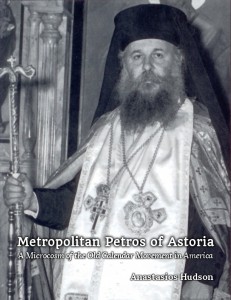If Orthodoxy Is True, Why Have I Never Heard of It?
As was explained in the previous article, What is the Orthodox Church, the Orthodox Church believes itself to be the original and true Church of Jesus Christ. Orthodoxy is not large nor is it well-known in the West, however, which often makes people wonder why they have not heard of this Church before. Much of it has to do with the events of history, and part of it is the fault of Orthodox people themselves in modern times given difficult external circumstances of adjusting to life in a new culture.
Historically, there was one united Church in both the East and the West until the late twelfth century. In the West, the most commonly known and powerful bishopric was that of Rome. In the Eastern part of the Empire, which was much more populous than the West, there were major bishoprics in Constantinople, Alexandria, Antioch, and Jerusalem. These major bishops were given the honorific title patriarch.
The Roman Empire fell in the West in the fifth century, but it continued in the East until much later. Historians often call this the “Byzantine” Empire, although no one in that time would have thought himself a “Byzantine.” Instead, they believed themselves to be Romans and their empire to be the Roman Empire, and it continued until the Turks captured it in 1453.
Because there was a strong empire in the East with large population centers across it, ecclesiastical power did not become as centralized as in the West. With the fall of the empire in the West, the patriarch in Rome, by this time called Pope, was looked upon as the glue that kept the fabric of Western civilization together. The Pope took on thus a political and cultural role in addition to his spiritual duties. Over the centuries, this resulted in the Popes seeing themselves as above the other patriarchs. There was much back-and-forth for several hundred years, culminating in several events which ended up splitting the West from the Orthodox Catholic Church gradually between 1054 and 1204.
In 1453, the Turks conquered Constantinople and the remainder of the Roman Empire fell. This lead the Christians in the East to be mostly second-class citizens, often poor, and unable to share their faith for fear of death, with some notable exceptions. At the same time, the Western powers were in the midst Renaissance and gaining fabulous wealth and strength. Their scientific advances allowed them to travel to and conquer vast amounts of land in the New World, Africa, India, and China. In each new place, the peoples were converted to Christianity via Roman Catholicism or its offshoot, Protestantism. The Orthodox expanded in Russia and through parts of Central Asia, but they were unable to penetrate deep into the Muslim lands. This is a major reason why today there are so many more Roman Catholics than Orthodox in the West.
Turning our focus specifically to the Americas, Orthodox missionaries first came to the New World through the Russian territory of Alaska in 1794, and converted large numbers of native peoples. In 1864, the first parish for Greeks was set up in New Orleans, Louisiana. Within the next fifty years, there were parishes scattered across the United States. A large number of Catholics from Eastern Europe who were familiar with Orthodoxy became Orthodox due to the work of Alexis Toth, a converted Orthodox priest. Often, however, these parishes were seen as havens for the immigrants that came there, which accounts for the second reason that Orthodoxy is not as well known in the West.
There were throughout this time notable exceptions to the ethnic character of Orthodox parishes, and liturgical and spiritual materials were translated into English. A small number of converts were beginning to enter into the Church, and the Church began to become more outward-focused, especially as the children of the immigrants became Americanized. However, it must be remembered that Orthodoxy was still seen as a foreign religion, and oftentimes many Orthodox children left the Church to become “more American.” The lack of resources and poverty of many Orthodox resulted in many of its parishes being unable to stem the tide of this loss, although it was beginning to be supplanted by the growing numbers of converts.
Another major blow to Orthodox expansion was the fall of the Russian Empire to the Communists in 1917. The Russian Empire had been providing funding to the Orthodox in America to help it grow, and when the Empire fell, this led to a large amount of chaos as the support and communications with the home Church were cut off. This placed a great deal of stress on an already stressed-out infant Church in America.
We thus see that two primary reasons why the Orthodox Christian Church is not as well known in the West are due to the vastly superior resources of the Western Churches, and the fact that the first Orthodox peoples in America were either Native Americans living in Alaska or immigrants who were trying their best to survive and fight off the loss of their faith as the pressure to assimilate mounted on them. Fortunately, since the 1960’s, the knowledge of Orthodoxy has been increasing greatly, and the number of converts to Orthodoxy has been steadily increasing. Many priests are converts, and there are parishes made up of large numbers of converts. New missions are forming in many areas which have not seen an Orthodox Church previously, and the Internet is helping to reach people in many areas as well. Now is a great time to see Orthodoxy for yourself, and we invite you to come to join us in worship and fellowship!


